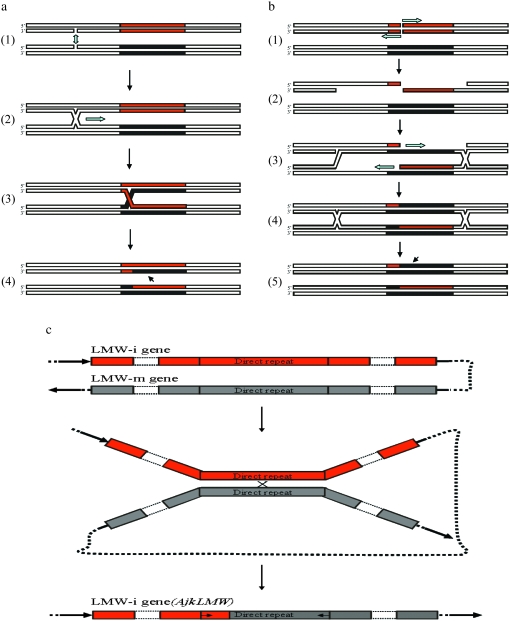Figure 5.—
Several hypotheses on the genetic mechanisms that may generate the chimeric gene. (a) Holliday model (single-stranded invasion mode). Red and blank frame represented LMW-i- and LMW-m-type genes, respectively. Two nicks took place in two non-sister chromatids in synaptonemal complex arrowed in 1. Subsequently, Holliday junction and the branch migration were produced and are indicated by single arrow in 2. As the result of the resolution of the branch in the LMW-i- and LMW-m-type genes in 3, the chimeric gene was formed as indicated with a black arrow in 4. (b) Double-stranded break-repair pathway. Double strands were broken in the same sites of the LMW-i-type gene and digested from 5′ to 3′ as arrowed in 1. Subsequently, a bare single strand intruded into the other chromatids and partnered with one of the chromatids, and the other chromatid was used as template to synthesize a new sequence as shown in 2–4. After the resolution of the branch, the new chimeric gene was produced as arrowed in 5. (c) Illegitimate recombination mechanism. Through the DR coding for nonapeptide (QQPPFSQQQ), the intrastrand recombination occurred in the U genome, and then the novel chemeric gene was generated by crossing over between LMW-i- and LMW-m-type genes. This illegitimate recombination event was estimated to have occurred ∼6.38 (±1.62) MYA.

